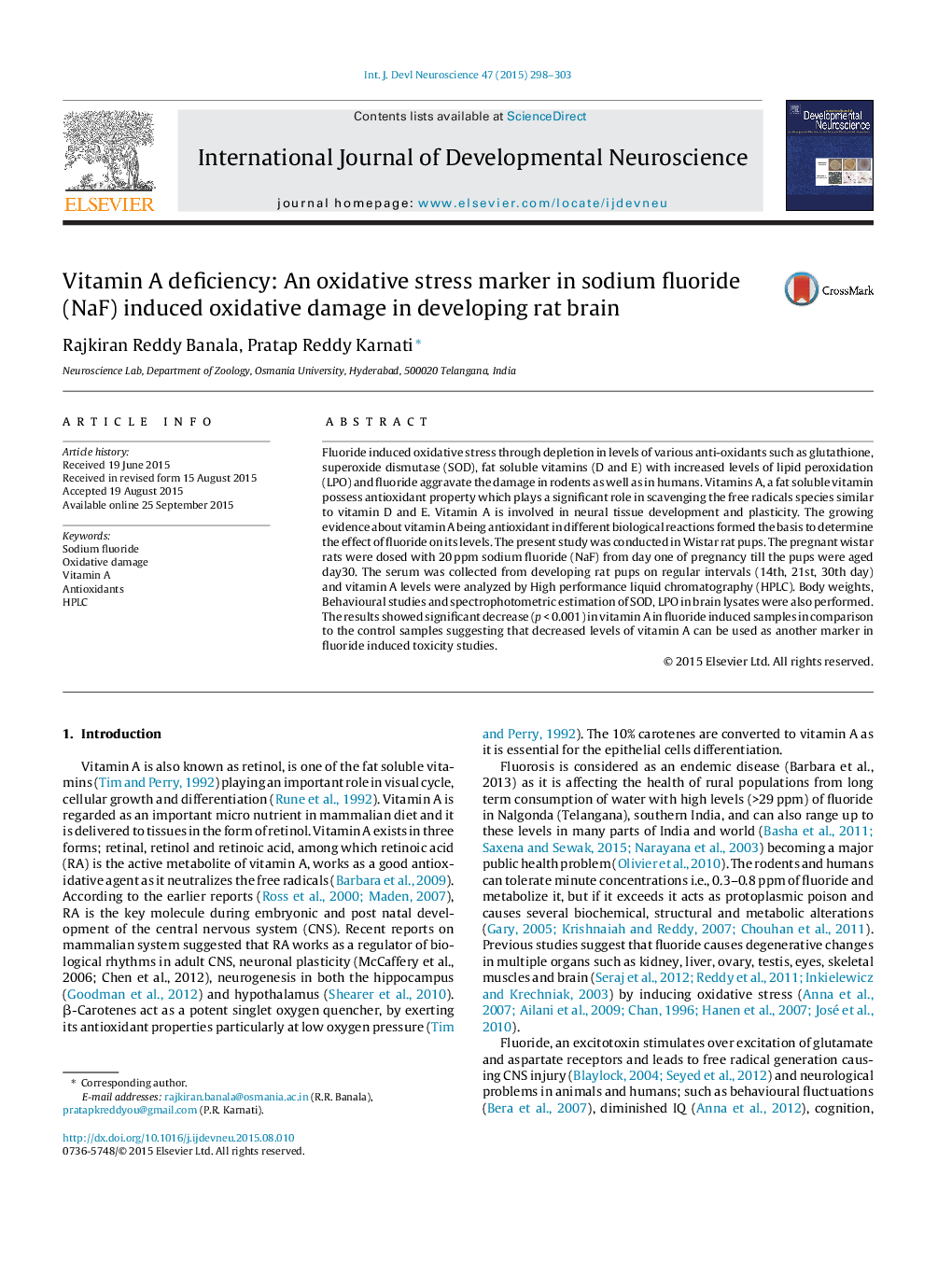| Article ID | Journal | Published Year | Pages | File Type |
|---|---|---|---|---|
| 2785657 | International Journal of Developmental Neuroscience | 2015 | 6 Pages |
•Vitamin A emerged as an oxidative stress marker in fluoride induced toxicity studies.•Sodium fluoride induced oxidative damage in developing rat brain.•Behavioural studies showed decreased motor control and learning ability.•Biochemical estimations showed increased levels of lipid peroxidation (LPO) and decreased levels of superoxide.
Fluoride induced oxidative stress through depletion in levels of various anti-oxidants such as glutathione, superoxide dismutase (SOD), fat soluble vitamins (D and E) with increased levels of lipid peroxidation (LPO) and fluoride aggravate the damage in rodents as well as in humans. Vitamins A, a fat soluble vitamin possess antioxidant property which plays a significant role in scavenging the free radicals species similar to vitamin D and E. Vitamin A is involved in neural tissue development and plasticity. The growing evidence about vitamin A being antioxidant in different biological reactions formed the basis to determine the effect of fluoride on its levels. The present study was conducted in Wistar rat pups. The pregnant wistar rats were dosed with 20 ppm sodium fluoride (NaF) from day one of pregnancy till the pups were aged day30. The serum was collected from developing rat pups on regular intervals (14th, 21st, 30th day) and vitamin A levels were analyzed by High performance liquid chromatography (HPLC). Body weights, Behavioural studies and spectrophotometric estimation of SOD, LPO in brain lysates were also performed. The results showed significant decrease (p < 0.001) in vitamin A in fluoride induced samples in comparison to the control samples suggesting that decreased levels of vitamin A can be used as another marker in fluoride induced toxicity studies.
